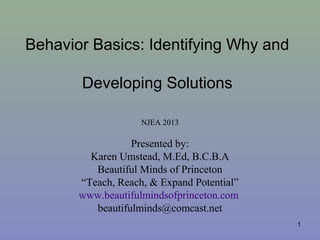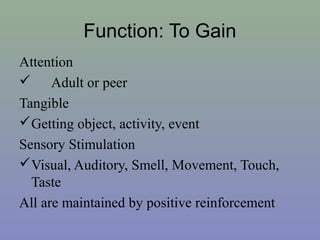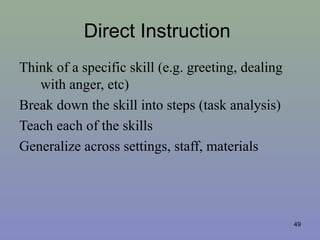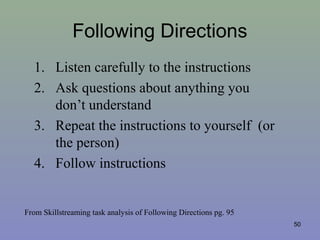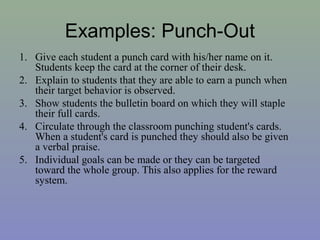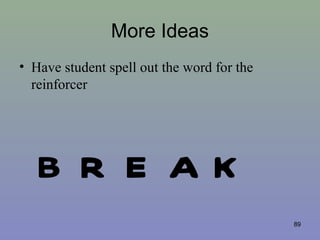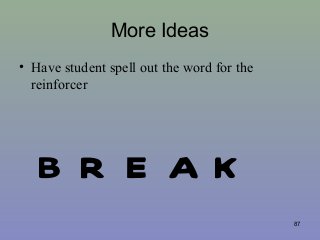This document summarizes a presentation on identifying and addressing problem behaviors. It discusses defining target behaviors clearly and measurably, identifying the function of behaviors, establishing behavioral expectations, and using research-based strategies like direct instruction, active engagement, choice-making, social skills instruction, modeling, role-playing and feedback. The goal is to understand why behaviors occur and develop effective solutions.
